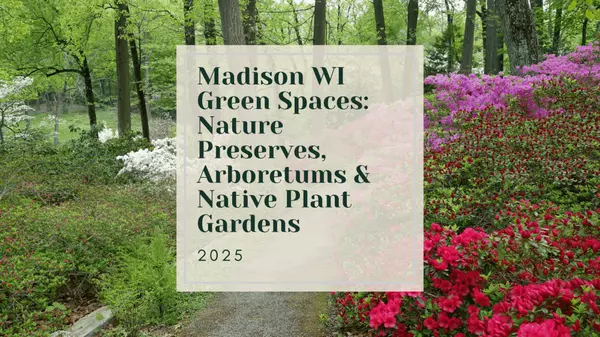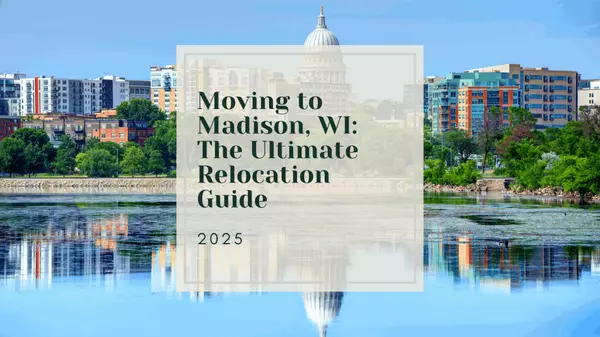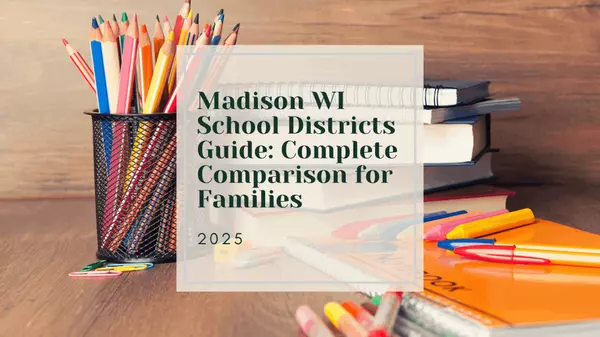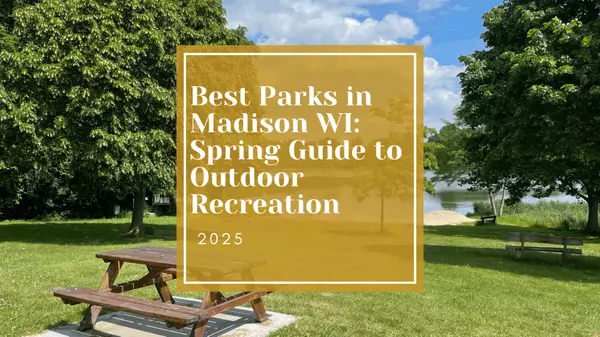Madison WI School Districts Guide: Complete 2025 Comparison for Families
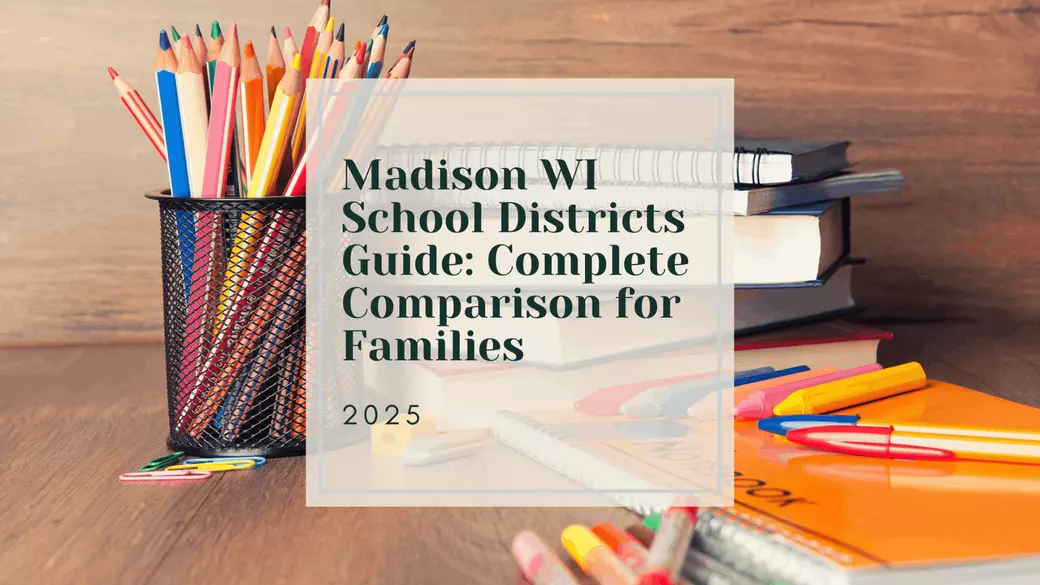
Madison WI School Districts Guide: Complete 2025 Comparison for Families
Growing up on Madison's west side, I've witnessed firsthand how our school districts have evolved over the decades. As a Madison native and local realtor, I'm often asked about our educational landscape by families considering putting down roots here.
I created this comprehensive guide to help you navigate Madison's school districts with confidence. Having attended Madison schools myself and now watching many clients with children make these important decisions, I understand how crucial education is in your relocation journey.
Let's explore Madison's diverse educational options with a focus on what matters most to families.
🔹 Madison School Districts Overview
Madison and the surrounding area offers several school district options, each with distinct characteristics. The Madison Metropolitan School District (MMSD) serves most of the city proper, while several suburban districts surround the area.
As someone who's spent my entire life in Madison, I've seen these districts evolve through various educational approaches, building renovations, and community changes. The districts maintain their own unique identities while all striving for educational excellence.
The main school districts in the Madison area include:
- Madison Metropolitan School District (MMSD)
- Middleton-Cross Plains
- Verona Area School District
- Sun Prairie Area School District
- Monona Grove School District
- McFarland School District
- Waunakee Community School District
- DeForest Area School District
Each district has its own strengths, challenges, and community feel. Let's look at what makes each unique.
💫 Madison Metropolitan School District (MMSD)
MMSD is Madison's primary district, serving approximately 27,000 students across 50+ schools. As Madison's largest district, it offers diverse programming and educational approaches.
Having grown up with many friends who attended MMSD schools, I've seen the district's commitment to inclusive education and diverse programming. The district operates 32 elementary schools, 12 middle schools, and 5 high schools, plus alternative programs.
Key MMSD highlights:
- Strong advanced learning programs for high-achieving students
- Robust special education services
- Dual-language immersion programs (Spanish-English) at multiple schools
- International Baccalaureate (IB) programs at some locations
- STEM-focused educational tracks
- Strong arts and music programs
- Diverse student body representing many cultures and backgrounds
MMSD high schools include East, West, La Follette, Memorial, and Capital High. Each has unique strengths - West High is known for academic excellence, East for strong arts programs, Memorial for athletics and academics, and La Follette for its diverse programming.
The district faces challenges typical of larger urban districts, including achievement gaps and resource allocation across diverse neighborhoods. However, MMSD continues investing in equity initiatives and modernizing facilities through recent referendum funding.
🔹 Middleton-Cross Plains Area School District
Middleton-Cross Plains serves the community directly west of Madison where I spent much of my childhood. With approximately 7,500 students, this district consistently ranks among Wisconsin's top performers academically.
My cousins attended Middleton schools, and I always noticed the strong community support for education there. The district includes 6 elementary schools, 2 middle schools, and Middleton High School, along with an alternative learning center.
Key Middleton-Cross Plains highlights:
- Consistently high test scores and academic performance
- Strong advanced placement (AP) course offerings
- Excellent special education services
- Well-funded extracurricular activities
- New and renovated facilities
- Strong community support and parental involvement
- Comprehensive athletics programs
Middleton High School regularly places among Wisconsin's top academic performers with impressive college acceptance rates. The district benefits from strong property tax support and community involvement.
The district has grown significantly over the past few decades, requiring facility expansions and new schools. While housing tends to be more expensive within district boundaries, many families consider the educational quality worth the investment.
💫 Verona Area School District
The Verona district, southwest of Madison, has experienced substantial growth partly due to Epic Systems (the healthcare software company) locating its campus nearby. The district serves around 6,000 students across 10 schools.
I watched Verona transform from a small community school system to an innovative, forward-thinking district as Madison's southwest corridor developed. The district now includes 6 elementary schools, 2 middle schools, and Verona Area High School, plus charter options.
Key Verona highlights:
- Brand new high school campus (opened 2020)
- Strong STEM programs influenced by local tech industry
- Multiple charter and alternative school options
- Growing diversity
- Strong community involvement
- Excellent special education services
- Comprehensive athletics and activities
Verona's new high school facility is among the most impressive in Wisconsin, with state-of-the-art technology, athletic facilities, and learning spaces. The district offers several educational approaches through its charter schools, including project-based learning and environmental education.
The rapid growth has created some challenges in maintaining district culture while integrating new families. Housing costs have also increased significantly in recent years.
🔹 Sun Prairie Area School District
East of Madison, Sun Prairie has transformed from a small town to a thriving suburb. The district serves approximately 8,500 students and has expanded significantly to accommodate growth.
I've watched Sun Prairie evolve dramatically since my childhood, when it was considered quite separate from Madison. Now it functions as a major suburb with excellent amenities. The district operates 7 elementary schools, 2 middle schools, and 2 high schools after opening Sun Prairie West High School in 2022.
Key Sun Prairie highlights:
- Newer facilities, including a second high school
- Strong community identity and school spirit
- Growing diversity
- Excellent athletics programs
- Strong performing arts
- Comprehensive curriculum with expanding AP offerings
- More affordable housing compared to western suburbs
Sun Prairie has managed growth well by investing in new facilities while maintaining educational quality. The district offers a good balance of academic rigor, extracurricular opportunities, and community connection.
The rapid expansion has created some growing pains, but the district has responded with thoughtful planning and resource allocation.
💫 Other Notable Districts
Several other excellent districts surround Madison:
Monona Grove School District (east/southeast):
- Approximately 3,500 students
- Strong community connection
- Excellent high school with comprehensive programming
- Waterfront location with unique recreational opportunities
McFarland School District (southeast):
- Approximately 2,500 students
- Small-town feel with proximity to Madison
- Strong academic performance
- Growing and modernizing facilities
Waunakee Community School District (north):
- Approximately 4,300 students
- Consistently high academic performance
- Strong community support and parental involvement
- Excellent facilities and programming
DeForest Area School District (northeast):
- Approximately 3,800 students
- Growing community with strong school-community connection
- Modernized facilities
- Strong athletics and extracurriculars
Each of these districts has unique strengths while maintaining excellent educational standards. Having grown up in Madison and watched these communities develop, I've seen how each maintains its own character while embracing educational innovation.
🎯 Choosing the Right District for Your Family
When helping families relocate to Madison, I always emphasize that there's no single "best" district - it depends on your family's specific needs and priorities. Here are factors to consider:
Educational priorities: Does your child need specialized programs, advanced academics, arts focus, or specific support services? Some districts excel in particular areas.
Community feel: Each district has its own culture and community connection. Consider whether you prefer an urban, suburban, or more rural setting.
Commute considerations: Think about your work location and daily commute in relation to school locations.
Budget realities: Housing costs vary significantly between districts. Consider what areas fit your financial parameters.
Extracurricular interests: If your child is passionate about specific sports, arts, or activities, research which districts have strong programs in those areas.
Future planning: Consider long-term educational pathways from elementary through high school.
While test scores provide one metric, they don't tell the complete story. I always recommend visiting schools, talking with current parents, and determining which environment feels right for your family's specific needs.
📝 Open Enrollment and Alternative Options
Wisconsin offers open enrollment, allowing students to attend schools outside their district if space permits. Applications typically open in February and close in April for the following school year.
Having guided many families through this process, I've seen both successes and challenges with open enrollment. While it provides flexibility, transportation becomes your responsibility, and popular schools may have limited availability.
Beyond public schools, Madison offers:
Private schools: Over 30 private schools operate in the Madison area, including religious and secular options like Edgewood, Madison Country Day, and High Point Christian.
Charter schools: Public charter schools operate within districts with specialized approaches or focuses.
Virtual options: Online learning programs through various districts expanded greatly after 2020.
Homeschooling: Wisconsin has an active homeschool community with many cooperative learning opportunities.
💫 Final Thoughts
Madison's educational landscape offers wonderful options for families at all stages. Having grown up here and now helping families find their place in our community, I've seen how our schools shape the Madison experience.
Each district has evolved to meet changing needs while maintaining commitment to educational excellence. While no district is perfect, Madison-area schools generally provide strong academic foundations alongside diverse opportunities for growth.
The right educational fit combines academics, community, and practical considerations unique to your family. Whether you prioritize specialized programming, community connection, or specific location, Madison offers options to match nearly any need.
For more insights about relocating to Madison with your family, download my FREE Madison Relocation Guide, which includes additional details about schools, neighborhoods, and community resources. Having lived here my entire life, I've compiled everything you need to know about making Madison home.
As a west side kid who's now helping families find their own Madison stories, I'm always happy to answer specific questions about our schools and communities. Madison's educational options continue to evolve, but the commitment to serving diverse learners remains constant. 🍎
Categories
Recent Posts



